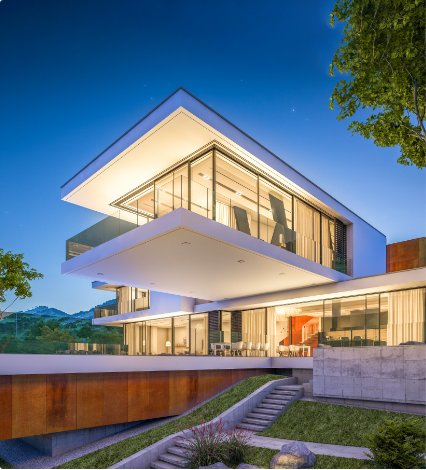Aloha! Hawaii is known for its pristine beaches, clear waters, and dynamic underwater ecosystems. With that in mind, it’s no surprise that the Hawaiian Islands have become synonymous with snorkeling and scuba diving.
Honolulu, the capital of Hawaii, is positioned on the south shore of Oahu and is an ocean lover’s dream. There are dozens of places close to Honolulu to enjoy a snorkeling adventure, and you’re certain to be able to find the perfect place for your personal ability and confidence levels.
This guide will give you handy tips on where to rent gear, reef-safe snorkeling techniques, and of course, the best places to spot Hawaiian marine life!
Where to Rent Snorkel Gear
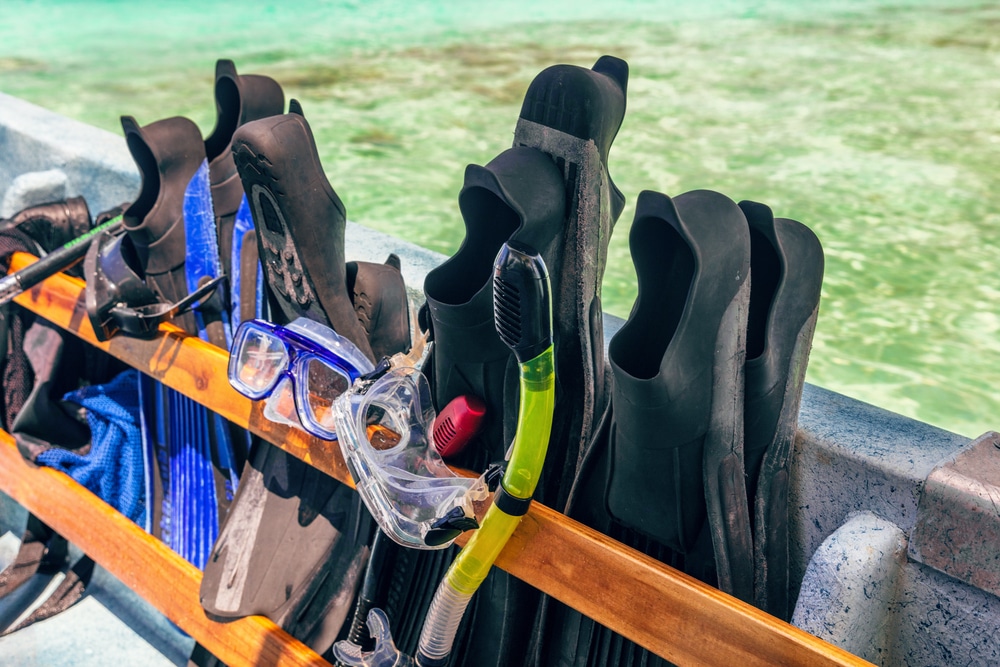
Whichever snorkel site you head to, there are plenty of places to hire equipment if you don’t have your own. Snorkel Bob’s is a popular chain for equipment hire on Oahu, or you can ask your hotel’s front desk for recommendations.
Tips for Snorkeling in Hawaii
Snorkeling is a popular pursuit and a major tourist attraction in Hawaii. The ocean’s white sandy bottom makes it perfect to view the colorful flora and fauna.
Sadly, excessive tourism has had a negative impact on the marine life native to the islands. Visitors are responsible for protecting the natural environment to allow it to live on for others to enjoy, so please bear this in mind when planning a visit.
Here are a few things to be aware of before heading into the water that will keep you and marine life safe:
- Reef-Safe Sunscreen: Only use reef-safe sunscreen to protect the underwater world from harsh chemicals
- Hands Off: Do not touch coral reefs, fish, or any other marine life at any time for any reason
- Gentle Kicking: If using flippers, kick gently and be aware of your surroundings to avoid any accidental damage to delicate reefs
- Buddy System: Avoid snorkeling alone and use a buddy system in case you get into danger unexpectedly
- Weather Check: Check weather and sea conditions and avoid going out when currents are strong, and winds are high
- Skill Level: Check that your preferred snorkeling spot suits your skill and confidence level before getting into the water. Avoid snorkeling spots with no lifeguard if you aren’t a confident swimmer.
Without further ado, here are the seven best snorkeling spots in Honolulu.
1. Hanauma Bay Nature Reserve
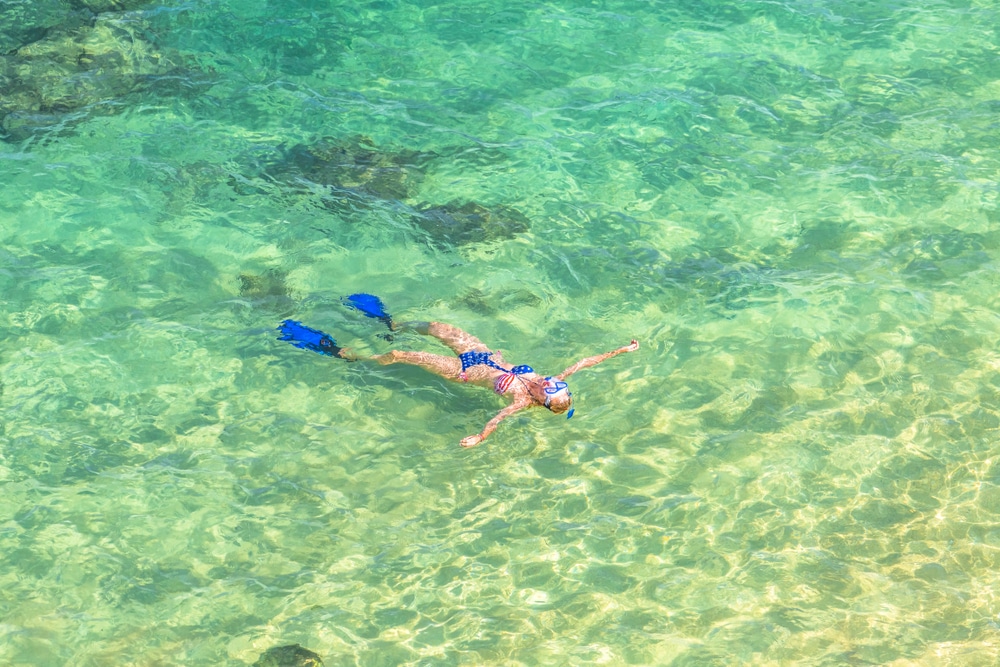
Hanauma Bay is the most-visited Oahu snorkeling spot and is said by some to be the most popular spot in the world. At one point, there were over 3,000 visitors to this nature preserve every day, but this has been capped at 720 per day to protect the natural environment.
What was once a volcanic crater is now a protected marine reserve and is home to more than 400 spectacular fish species, sea turtles, and other marine life. The naturally sheltered cove protects the bay and keeps the water extremely calm, so this is a great spot for children and beginner snorkelers. Snorkeling can also be done directly from the beach without needing a boat trip.
Snorkelers can expect to see dozens of the colorful species that are native to this area, as well as some cool underwater landscapes due to the bay’s volcanic origins. It’s possible to get up close to the fish and even take photos with your underwater camera (just don’t touch or disturb them).
If coral reefs and topography are more your thing, you may want to look elsewhere, as there are only a few channels to explore. It’s also worth noting that underwater visibility can be limited during the winter months due to the slightly more turbulent currents. However, it’s still a suitable spot for snorkeling and will also be quieter than in the more popular months.
Hanauma Bay is ten miles east of Honolulu and around a 15-minute drive from downtown. To protect the coral reef and other marine life from over-tourism, Hanauma Bay is closed on Mondays and Tuesdays. However, the park is open every other day of the week from 6.45 am to 4:00 pm, and entry is $25 per person.
There is a car park on-site, or organized trips are available if you’d prefer to leave the planning to someone else. If you’re a first-time visitor, you’ll be required to watch a 9-minute video before entering the park to learn about the area’s marine life and the safety rules of the park. You must book ahead as entry is limited and can fill up quickly.
Go early in the morning as it tends to be the quietest time.
2. Queens Beach
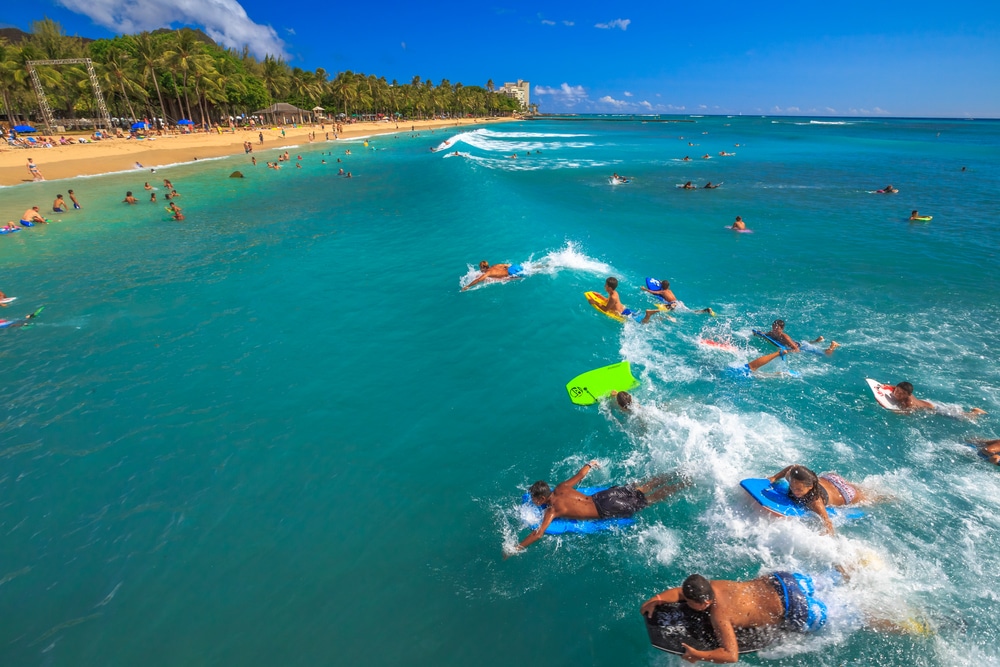
The closest snorkeling spot to Honolulu is just south of Waikiki Beach’s hotel zone at the Marine Life Conservation District in front of Queens Beach. This destination is just 3.5 miles from downtown Honolulu, and parking can be found on both sides of the road.
The spot begins at Kapahulu Groin, the jetty at the intersection of Kalakaua Avenue and Kapahulu Avenue and ends at the north wall of the Natatorium. Queens Beach has plenty of amenities, including restrooms, showers, picnic tables, and a lifeguard.
While this spot may not have the widest diversity in marine life, its proximity to the city makes it worth mentioning. Coral reefs run the entire length of the beach, around 100 feet off-shore, and since fishing is prohibited in the area, there will likely be a decent number of colorful species to check out here.
If you are a confident swimmer and the tide is high enough, swim over this flat reef and head out another 400-600 feet to the outer reef edge. Here, the topography is more interesting, and you will likely see more fish species.
Snorkeling can be done from the beach, and the best place to enter the water is at the south end before the aquarium’s sea wall, where a sandy area extends into the ocean for a good distance. Caution is needed when snorkeling off Queens Beach, and if there is a south swell, you should be mindful of currents and only go out when waves are calm.
3. Sans Souci Beach

This beach is sometimes known as “Kaimana Beach” and is an easily-accessible place to snorkel from Honolulu. It’s just 4.5 miles and a 15-minute drive away, so it makes for a great half-day activity from the city.
Sans Souci Beach is a great snorkeling spot for all ages and abilities because the water is accessed from a wide, sandy entrance with a gradual increase in depth. There are some coral and fish to check out, and if the tide is high, you can keep swimming out over the reef to explore the deeper waters.
If you are a strong swimmer and are confident in strong currents, some of the best snorkeling can be found by following the rock wall on the left end of the beach. Visibility is often better here, and there are more fish to see, but the tides are stronger, so take care and don’t go out alone. As with Queens Beach, don’t snorkel at all if there is a south swell because it can be dangerous, and visibility is poor.
There is usually a lifeguard on duty, and there are other amenities, including picnic tables, showers, restrooms, and shaded areas.
4. Kahe Point Beach Park
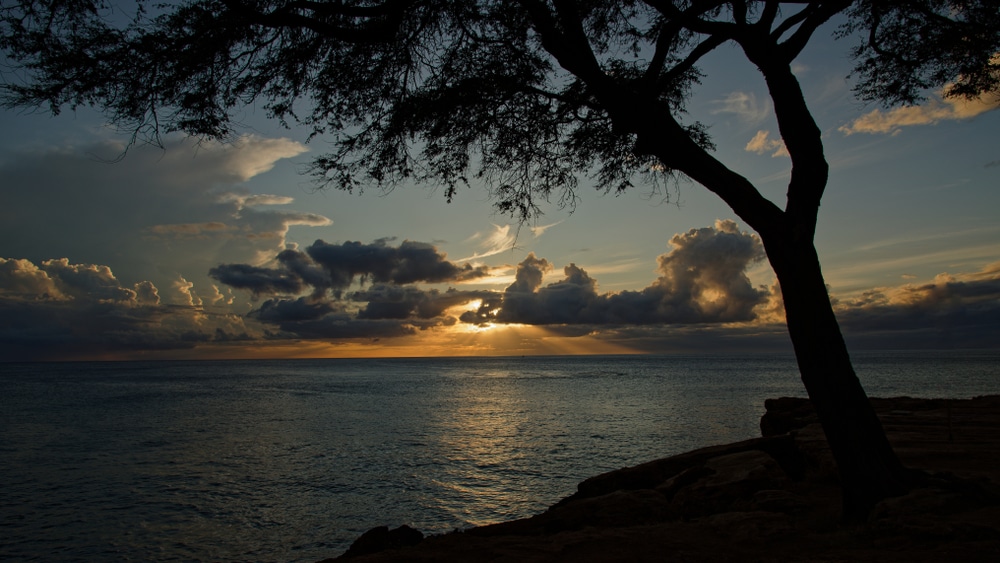
Intermediate and advanced snorkelers looking for a more challenging snorkeling experience should check out Kahe Point Beach Park on the west side of Oahu. Kahe Point is nicknamed Electric Beach for the nearby electric power plant. Clean, warm water is outflowed offshore through two huge pipes, and the warm water at the opening of these pipes attracts lots of fascinating sea life for snorkelers to enjoy.
These beaches are more exposed than the others on this list, and the waves and currents can make entry a challenge. There are no lifeguards here, so beginners and unconfident swimmers shouldn’t attempt to snorkel here unless on a snorkel tour with licensed instructors. The water is very shallow at first but has depths of around 20 feet at the pipes’ opening, allowing for a great bird’s eye view of the marine life below.
Snorkeling can be done directly from the beach if you’re willing to tackle to currents. To get to the entry, drive 25 miles/25 minutes from downtown Honolulu to Kahe Point. From here, walk north from the parking lot, then down the hill past the pavilions and restrooms. Head through the trees, and you’re there.
There are plenty of parking spots close to the entrance but no restaurants, so take your own water and some snacks.
5. Turtle Canyons
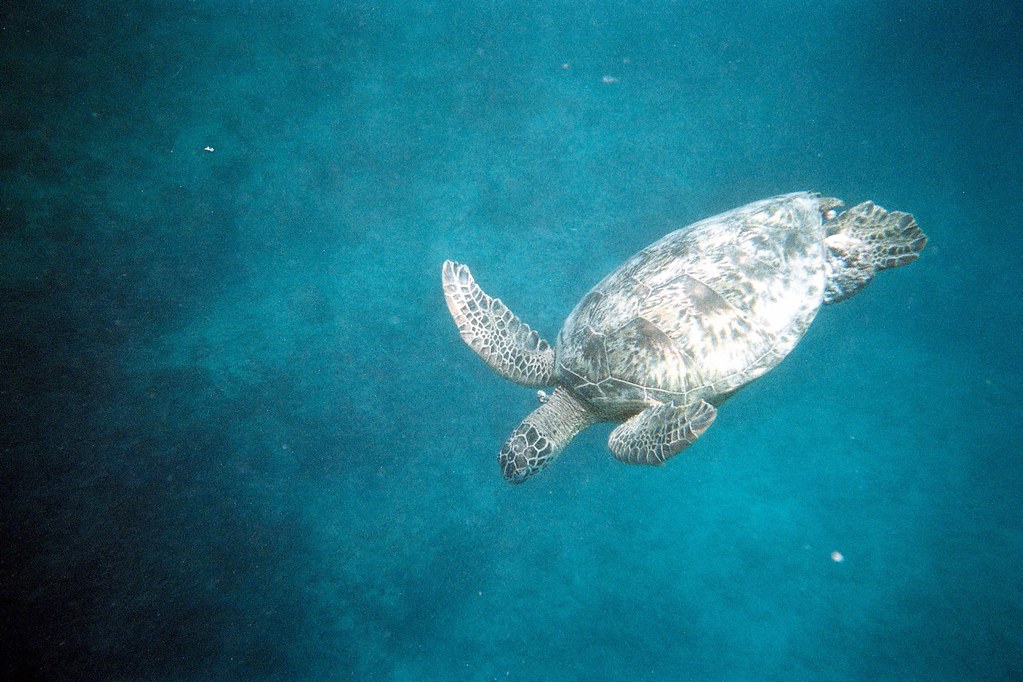
Turtle Canyons is located off-shore of Waikiki and is ideally visited by a catamaran, kayak, or sailing tour. An organized tour can be great for groups of varying snorkeling capabilities or beginners who would prefer not to go out alone.
There are several great tour vendors in Honolulu and Waikiki, and your chosen tour agency will almost certainly provide all the snorkeling gear that you need. Most tour itineraries will include around two hours of snorkeling and may also include refreshments, but check what’s offered in the package before signing up.
Once you and your tour group have made it out to Turtle Canyons, you’ll be rewarded with tropical fish and many more fascinating marine species. As the location’s name suggests, you’ll also see Hawaiian green sea turtles. They often congregate above the reef that’s known as ‘Turtle Cleaning Station’, where small fish gather to clean their shells. It can be an incredible sight, so don’t forget to pack your underwater camera.
There are also opportunities to spot wildlife before descending into the water, including dolphins and flying fish. In the winter months, you might also see humpback whales.
6. Ko Olina Lagoon Beach
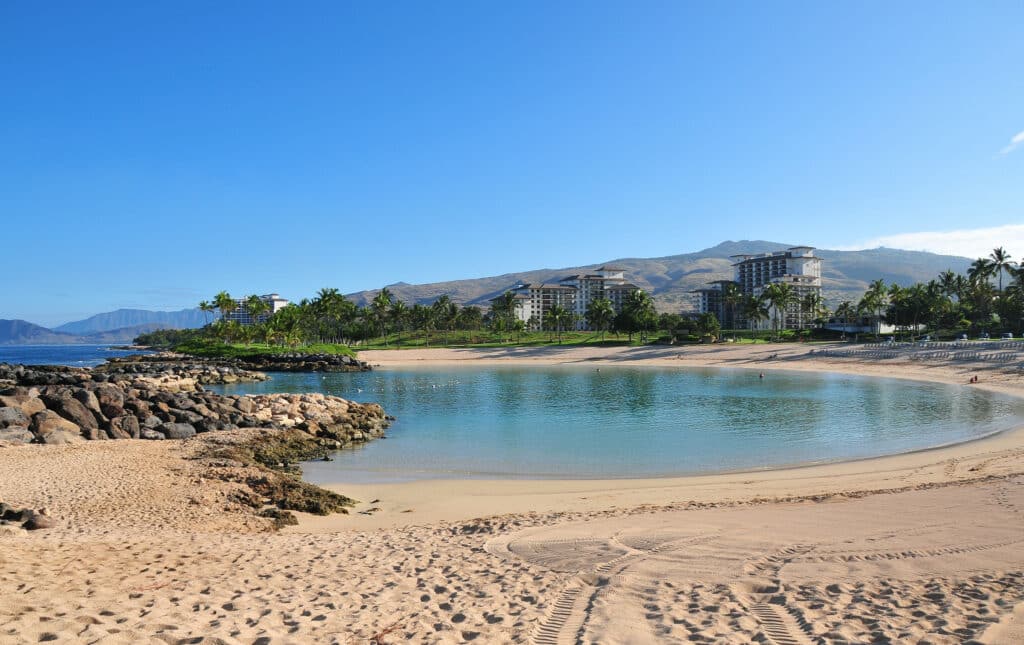
Ko Olina Lagoon Beach is a great spot because it offers the option of entering via the beach or taking a boat tour. It’s a bit further away from Honolulu and takes around 45 minutes to drive there, but it’s a great day out for anyone wanting to see Hawaii’s underwater world at its best.
A 1.5-mile-long path connects four beautifully sandy lagoons. Each lagoon is accessible barefoot thanks to the soft sand, and the waters are calm enough for children, beginners, and not-so-strong swimmers. Fish identification can be a fun game for youngsters in the calm, shallow waters of the lagoons, so bring along a waterproof fish identification card if possible.
If you plan on taking a boat tour, you can book in Honolulu or head to the harbor and approach one of the companies operating there. A boat trip will give you access to more sealife than the lagoons and makes for a fantastic family day out. Another great bonus of a boat tour is that you’ll enjoy a stunning panoramic view of the west-Oahu coastline as you sail out to the snorkeling spots on your itinerary.
There is limited public parking at Ko Olina Lagoons, and restrooms and showers are on-site. There is plenty of grass to sit out on and some shaded areas to escape from Hawaii’s strong sun.
7. Sharks Cove
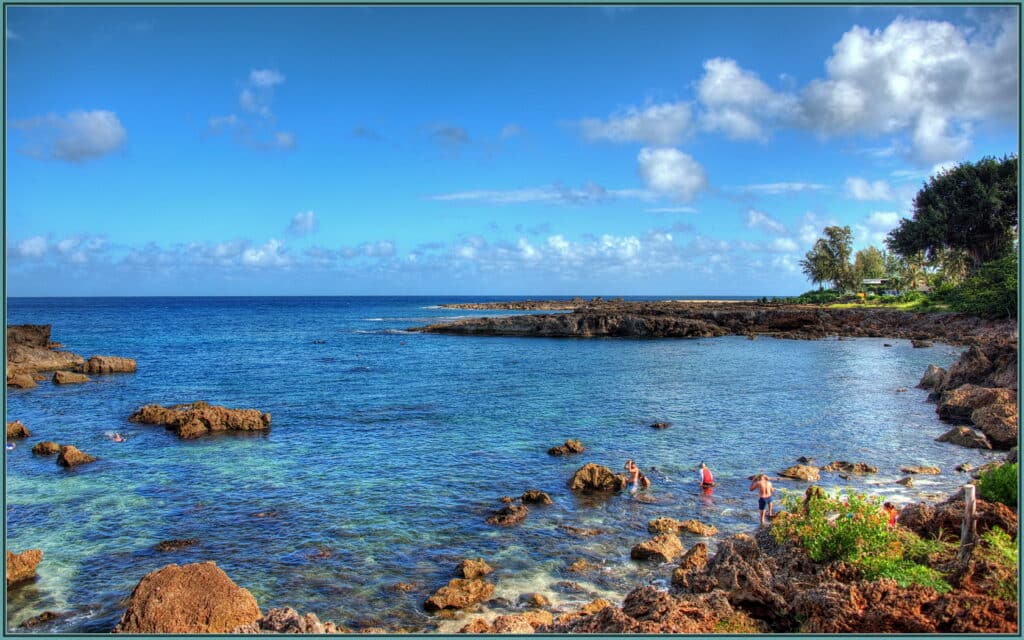
Sharks Cove is on the North Shore of the Oahu and is a popular snorkeling day trip from Honolulu. It can be reached in under an hour, with breathtaking scenery along the way.
It is part of the Pupukea Marine Life Conservation District, and the protected cove is home to many species of tropical fish and fascinating topography. However, it should be noted that there isn’t much coral in this conservation area if that’s what you are most interested in.
The depth of the cove gets to around 20 feet in places, and the large boulders are fun to swim around and spot shoals of fish. Head to the center of the mouth of the cove for the deepest water and a great bird’s eye spot to view colorful marine life.
During winter, huge waves break into this bay, making visibility poor and conditions dangerous. However, the waves are much calmer in summer, and intermediate snorkelers will have no trouble with the conditions. Snorkeling can be accessed via the beach but consider bringing water shoes because the rocks are sharp, and it can be hard to maintain balance while wading into the water.
The drive from downtown Honolulu is 30 miles and takes around 40 minutes. There is parking available at Sharks Cove, but it can fill up quickly, so aim to arrive early. Another bonus of arriving early is the view of the bay from the parking area on the low cliff. The dramatic beach looks particularly impressive while empty before the crowds arrive and will make a spectacular photo for the family album.
Snorkel in Paradise
It’s tough to have a bad day in the waters around Honolulu. These seven snorkeling spots hold the magic that is Hawaii’s one of a kind ocean ecosystem.
When heading out on an underwater adventure, remember the tips at the beginning of this article not only to stay safe but to keep marine life protected for others to enjoy in the future.
Featured Image Credit: Maridav
